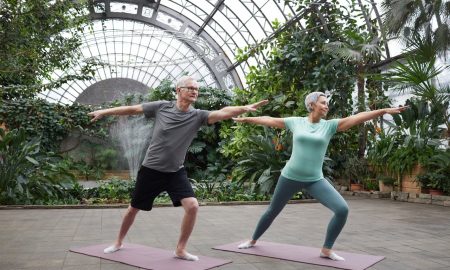
Change the Way You Look at Fitness by Using Heart Rate Zones

Perhaps you weren’t aware that there are various heart rate zones that a person falls under when they exercise. Knowing these zones and what they mean can help you get more out of a workout session. Try out your favorite exercises in several different zones to reap the benefits of each! Here are the zones to look out for:
Healthy Heart Rate Zone
 The zone in which your heart rate is at about 50% to 60% of your maximum heart rate is called the healthy heart rate zone. This zone is very comfortable to exercise in and quite easy when compared to other heart rate zones. This zone is considered the lower end of the moderate-intensity zone. When exercising in this zone, you should be able to carry out a full conversation, though you may breathe slightly heavier than usual. As you can guess, this is less intense and doesn’t give you the optimal cardiorespiratory training advantages. However, it does work for reducing body fat, cholesterol, and blood pressure. In this zone, energy is used up by the body by burning up 10% carbohydrates, 85% fat, and 5% protein. A good example of an exercise in this zone is walking.
The zone in which your heart rate is at about 50% to 60% of your maximum heart rate is called the healthy heart rate zone. This zone is very comfortable to exercise in and quite easy when compared to other heart rate zones. This zone is considered the lower end of the moderate-intensity zone. When exercising in this zone, you should be able to carry out a full conversation, though you may breathe slightly heavier than usual. As you can guess, this is less intense and doesn’t give you the optimal cardiorespiratory training advantages. However, it does work for reducing body fat, cholesterol, and blood pressure. In this zone, energy is used up by the body by burning up 10% carbohydrates, 85% fat, and 5% protein. A good example of an exercise in this zone is walking.
Fitness Heart Rate Zone
This zone is entered when the heart rate is at around 60% to 70% of your maximum heart rate. The fitness heart rate is at the higher end of the moderate-intensity exercise zone. When exercising in this zone, your breathing will certainly be heavier, but you will be able to speak in short sentences. In this zone, more calories are burned than in the healthy heart rate zone, only because the exercise is more intense. Your body will be using energy in the same proportions though, at 10% carbohydrates, 85% fat and 5% protein. An example of an exercise in this zone is a brisk walk.
Aerobic Heart Rate Zone
 In this heart rate zone, your heart rate should be between 70% and 80% of your maximum heart rate. When you reach this zone, you are in the vigorous-intensity zone, and your breathing will be hard. You will only be able to speak in short phrases, not in sentences. If your goal is endurance, then this is the zone to be training in.
In this heart rate zone, your heart rate should be between 70% and 80% of your maximum heart rate. When you reach this zone, you are in the vigorous-intensity zone, and your breathing will be hard. You will only be able to speak in short phrases, not in sentences. If your goal is endurance, then this is the zone to be training in.
Your body spurs to build new blood vessels to improve your circulatory system, and you benefit from an increase in both lung and heart capacity. It has been found through studies that exercising 20 to 60 minutes in the aerobic heart rate zone offers the optimal benefits the zone has to offer. In this zone, energy use breaks down into 50% of calories from fat, 50% from carbohydrates, and under 1% from protein stores. Examples of exercise in this one are running or cycling.
Anaerobic Zone
This zone is reached when your heart rate is at 80% to 90% of your maximum. You won’t be able to speak in sentences or phrases during this zone, as you will only gasp out a single word at a time. This intensity of exercise improves the amount of oxygen you can consume. The exertion of this level leads your body to the point at which it produces lactic acid. Racewalkers, runners, and cyclists use the anaerobic zone to improve on their speed. The body is using energy from 85% carbohydrates, 15% fat, and under 1% protein in this zone.
Red-Line Zone
 This is the topmost zone when you enter a heart rate range between 90% and 100% of your maximum. There is no higher zone than this. People typically cannot stay in this zone for longer than a couple of minutes. You will barely be able to gasp out a single word if you are exercising at this sone. This is generally a zone used for short, intense bursts during exercise, or high-intensity interval training. You do burn many calories in this zone, but 90% of them are carbohydrates and 10% fats, with less than 1% being protein.
This is the topmost zone when you enter a heart rate range between 90% and 100% of your maximum. There is no higher zone than this. People typically cannot stay in this zone for longer than a couple of minutes. You will barely be able to gasp out a single word if you are exercising at this sone. This is generally a zone used for short, intense bursts during exercise, or high-intensity interval training. You do burn many calories in this zone, but 90% of them are carbohydrates and 10% fats, with less than 1% being protein.
There is no best workout zone to be in. It is best if you vary the exercises and the intensity at which you do them over the week. Combining and changing the length and intensity of your workouts will keep your body guessing and help you avoid the dreaded ‘plateau.’ Using a device to measure your heart rate during exercise is most convenient so that you do not stop to measure your pulse the traditional way. Understanding how your heart rate indicates the intensity of your workout will help you get more out of your fitness program.
More in Fitness
-
`
Amanda Bynes Pregnant at 13? Debunking the Rumors
In recent years, the internet has been ablaze with rumors surrounding former child star Amanda Bynes, particularly regarding allegations of a...
July 1, 2024 -
`
Can Baking Soda Clean Your Lungs?
Years of inhaling cigarette smoke, pollution, and other toxins can leave you longing for a way to cleanse your lungs. The...
June 27, 2024 -
`
How to Build Muscle Mass After 60? 5 Proven Strategies
Curious about how to build muscle mass after 60? You are not alone. And the good news is that it is...
June 20, 2024 -
`
Prediabetic Foods That Can Lower Your Blood Sugar in 2024
Prediabetes is a health condition characterized by blood sugar levels that are higher than normal but not high enough to be...
June 13, 2024 -
`
Kelly Clarkson’s Weight Loss Journey | Here Are the Details
Kelly Clarkson’s weight loss has been a hot topic among fans and media alike. The iconic American singer and host of...
June 3, 2024 -
`
Essential Vitamins for Gut Health – A Comprehensive Guide
Our gut does more than just digest food – it plays a vital role in immunity, mood, and overall health. But...
May 30, 2024 -
`
Looking to Build A Stronger Sculpted Back? Try Cable Back Workouts
Back workouts using cables, or cable back workouts as they are commonly known, have become the gold standard for anyone aiming...
May 22, 2024 -
`
How Much Water Should I Drink on Creatine? Hydration Tips
Creatine, a popular supplement among athletes and fitness enthusiasts, has gained widespread recognition for its ability to enhance muscle strength, power,...
May 17, 2024 -
`
What Is Bruce Willis’s Net Worth? Get the Inside Scoop Here!
Bruce Willis, the action hero who has saved the day countless times on screen, has built a legendary career. But how...
May 11, 2024















You must be logged in to post a comment Login